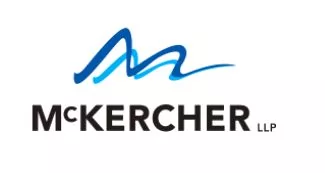- within Law Department Performance, Food, Drugs, Healthcare, Life Sciences and Tax topic(s)
- with Inhouse Counsel
- with readers working within the Insurance, Property and Law Firm industries
As published by Del Communications at potashworks.com in PotashWorks 2024 magazine.
RAS stands for Renewable Access Service, which is SaskPower's new program that will allow participating companies to purchase clean electricity directly from qualified Independent Power Producers.
Potash companies and other industrial companies who aspire to achieve environmental, social and governance (ESG) goals should be excited, or at least curious about SaskPower's RAS program.
Why? Because RAS will allow companies operating in Saskatchewan (Customers) to buy electricity directly from Independent Power Producers (IPPs) instead of SaskPower. In doing so, Customers will have certainty that their electricity is from a renewable source rather than from a mix of SaskPower's various fuel sources – coal (24%), natural gas (40%), renewables (34%) and other (2%). In doing so, Customers ensure their electricity use aligns with their corporate ESG goals and sustainability objectives by determining how their electricity is generated, who they buy from, and securing environmental attributes to offset their carbon emissions from other industrial operations.
On the same note, Customers determined to promote Indigenous partnerships may, through carefully crafted project ownership structures and other project agreements, encourage or require IPPs to involve Indigenous groups in projects through equity, contracting or employment opportunities. In stark contrast, companies that do not participate in RAS will have no say in how, where or who their electricity is sourced from, nor secure the environmental attributes produced from renewable generation when purchasing electricity under conventional SaskPower utility accounts.
Effectively, a renewable energy project qualified under RAS, whether it be solar or wind, is developed for the primary purpose of supplying clean electricity to carbon intense Customer operated sites, which may include mines, oil and gas refineries or manufacturing sites. In simple terms, the IPP will generate, and then transmit, electricity through SaskPower's grid (for a fee via Intra-Provincial Transmission Tariff) to the Customer's site for consumption. This arrangement will be documented in a corporate power purchase agreement (CPPA, but it also goes by other names).
From a legal perspective, the CPPA typically hinges on several critical terms that are essential for a clear and enforceable contract, the most important being pricing and performance guarantees, duration and termination events, as well as construction, commissioning and force majeure events. Under RAS and Saskatchewan carbon regulation, other issues also require careful consideration, namely the creation, ownership and transferability of environmental credits or attributes, load matching, and curtailment. Addressing both load matching and curtailment, and mitigating associated risks, will be essential, in addition to managing and mitigating the usual regulatory, permitting, construction and financing risks.
Though CPPAs will change how Customers source electricity, Customers will remain connected to the same reliable power they've always had. SaskPower will be a mandatory partner, providing oversight and technical guidance to Customers and IPPs participating in RAS. SaskPower's role will include constructing transmission facilities, developing joint operating procedures and the commission plan, authorizing transmission and monitoring the project to ensure performance requirements are met. SaskPower will also charge a fee for their services and the Intra-Provincial Transmission Tariff for moving electricity through their grid.
While RAS is currently only offered to select heavy industrial customers, SaskPower has announced with optimism that it "tentatively" plans to open RAS to all its large industrial clients in 2024. Based on the current intake process, RAS projects will need to produce at least 10 MW in generating capacity and are expected to take 2 to 3 years to operationalize.
While Canada has set 2035 as its net zero target date (which would negate the need for directly sourcing clean electricity), Saskatchewan's path to net zero is planned for 2050, 15 years later than the federal target. As a result, the benefit of a long-term CPPA beyond 2035 is viable in Saskatchewan, but the intersection with federal regulation and policy cannot be ignored. At this point, there may be more questions than answers. How will the Clean Electricity Regulations impact renewable projects post-2035? What if SaskPower accelerates its trajectory to net zero electricity before 2050? What about carbon pricing compliance and one-off regional exceptions granted on political whims? Or the effect of change in government policy with the election of new governments? These are questions IPPs and RAS Customers will want to consider when settling the terms of their CPPA and related project agreements. Despite the uncertainty, RAS has the immediate potential to reconcile public, private and government interests while making positive steps to achieve shared sustainability goals in Saskatchewan.
The content of this article is intended to provide a general guide to the subject matter. Specialist advice should be sought about your specific circumstances.



